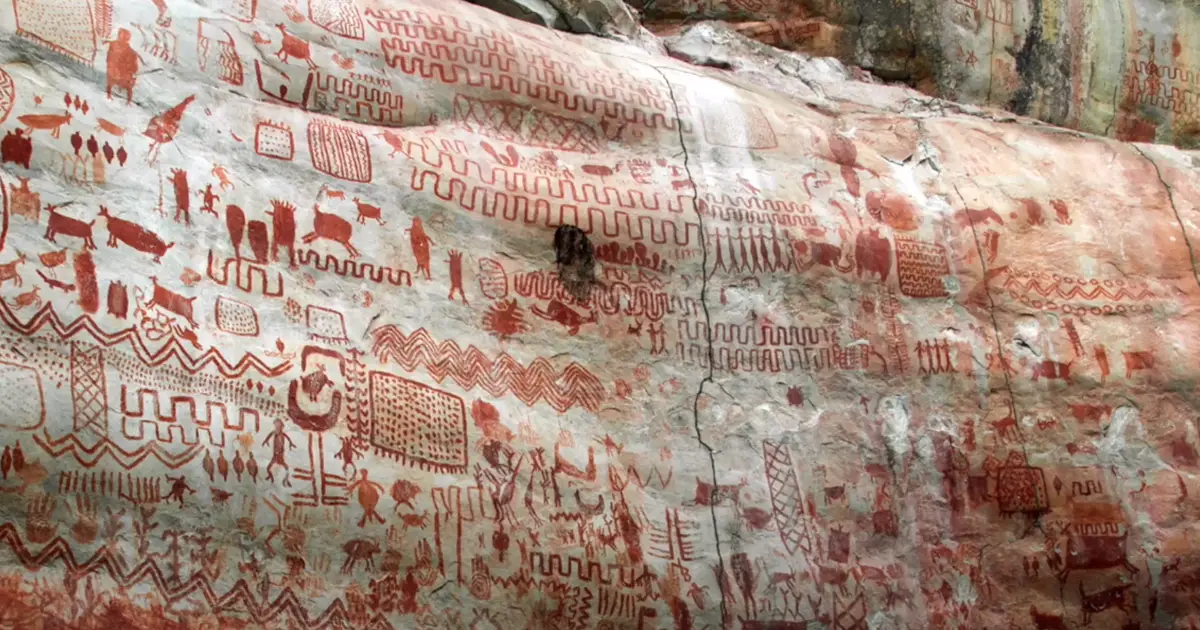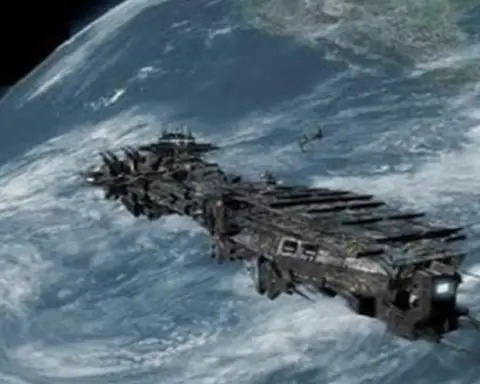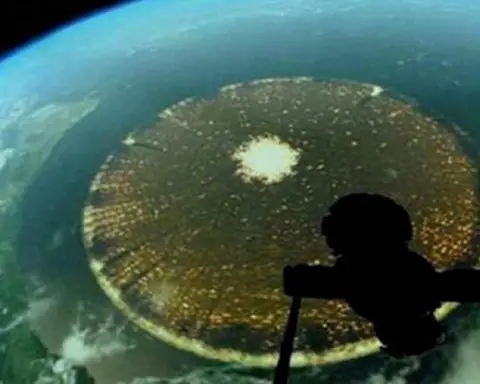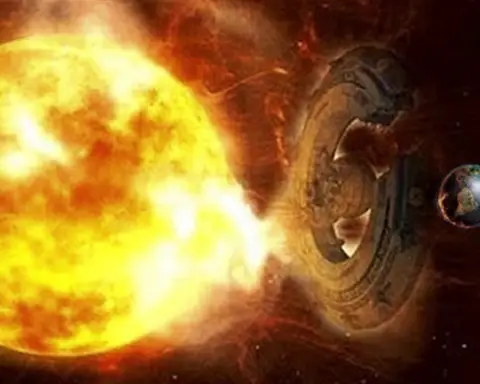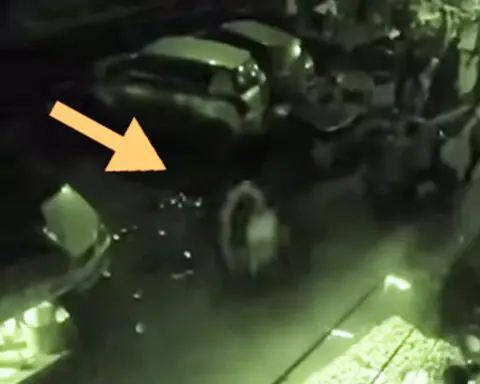One of the world’s largest pieces of fossil rock art has been discovered in the Amazon jungle. In the Colombian Amazon, archaeologists unearthed tens of thousands of animal and human paintings on cliffs spanning nearly 13 kilometers, called the “Sistine Chapel of the Ancients.”
As images of extinct Ice Age species demonstrate, some of these paintings stretch back as far as 12,500 years (such as mastodons, and giant sloths).
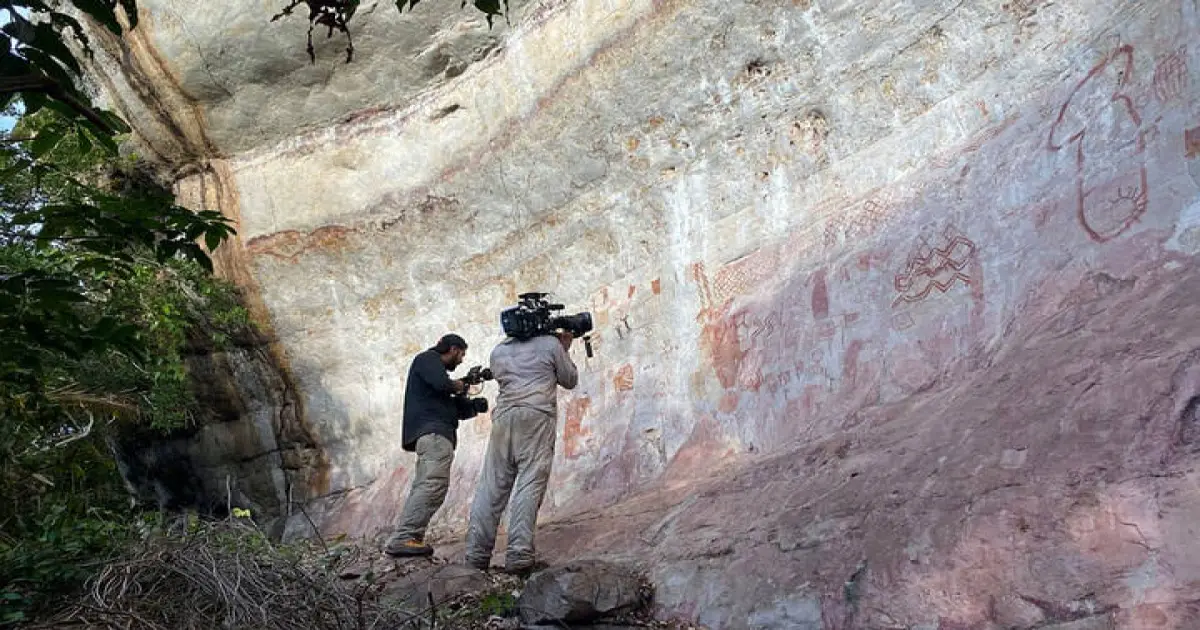
These animals were seen and drawn by some of the earliest humans to visit the Amazon. His photographs depict an old world that has since vanished. The drawings are so large that studying them would take millennia.
The discovery was made last year, but it was kept hidden until now because it was shot for a new Channel 4 show called Jungle Mystery: Forgotten Kingdoms of the Amazon, which will air in December.
The site is near the Chiribiquete National Park, in the Serrana de la Lindosa, where rock art has been uncovered.
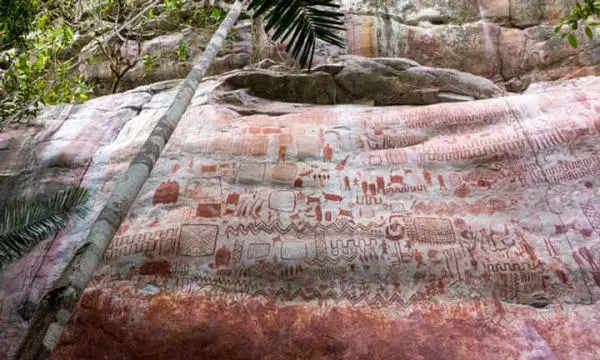
“The find is so recent that they haven’t even awarded the site a name yet,” Ella Alshamahi, an archaeologist and explorer who presented the video, told The Observer. When you’re there, your emotions move quickly.
Hundreds of thousands of works of art are at stake. It would take generations to keep track of them all.
“Every turn you make is a fresh wall of murals,” says José Iriarte, professor of archeology at the University of Exeter and leader of the British Colombian team that found the wall.
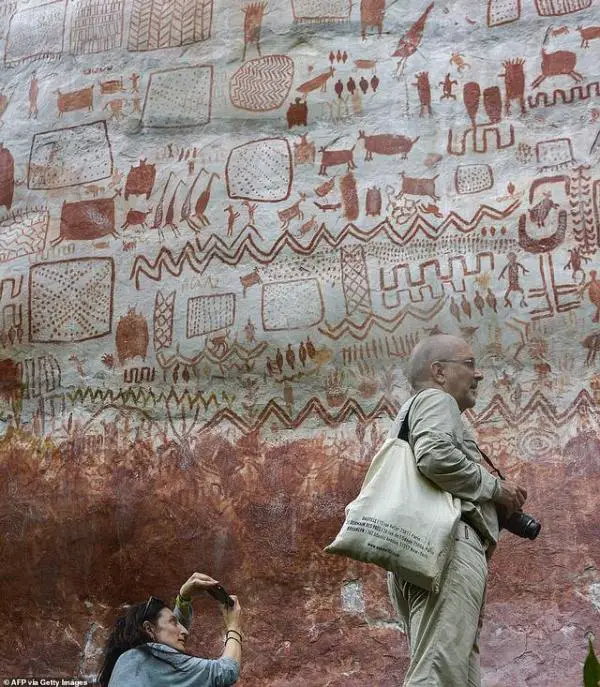
We started seeing things that weren’t alive anymore. Because the images are so genuine and well-made, we have no doubt that you are gazing at a horse, for example. The Ice Age horse’s profile was wild and stylized.
Because it’s so detailed, we can also see horsehair. It’s a fascinating topic. Fish, frogs, lizards, and birds, as well as humans dancing and holding hands, are among the images.
Because to the remoteness of the place, a group of archaeologists and filmmakers trekked for four hours after a two-hour trip from San José del Guaviare. They made it through the region’s most dangerous citizens.
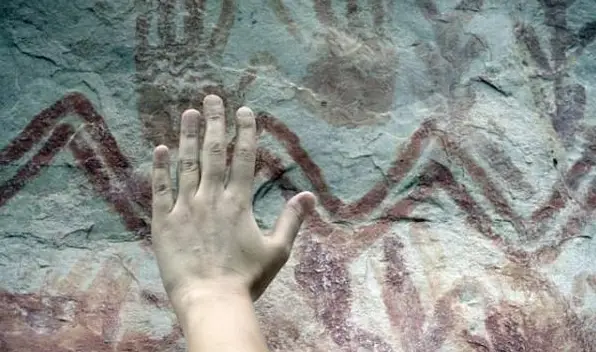
Alligators abound, and we kept our eyes peeled for snakes, according to Alshamahi, who recalls a giant bushmaster (chochoana silent rattle, America’s deadliest snake with an 80% death rate) blocking its way into the jungle.
They were running late, and the room was pitch black. They had no intention of going in front of the snake, and they knew that if they were injured, they wouldn’t be able to get to an ambulance.
He claimed I was in the middle of nowhere. But, he remarked, viewing the artworks was definitely worth it. Colombia is a country torn apart by a 50-year civil conflict between the FARC insurgents and the Colombian army, which has recently negotiated an uneasy truce, as the documentary makes out.
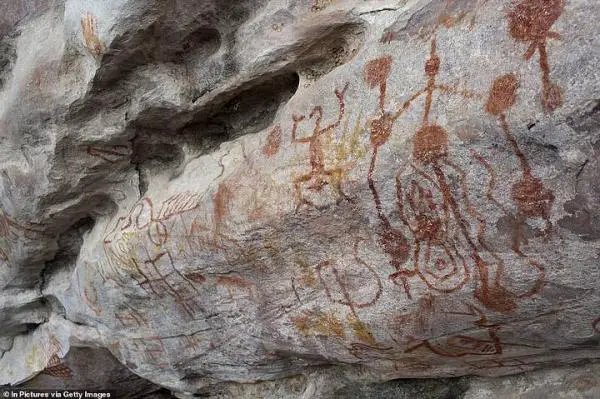
Until recently, the area where the paintings were discovered was completely off-limits, and getting there safely required careful maneuvering.
AlShamahi remarked that when we arrived in FARC territory, everything was just as some of us had expected. The scan is still ongoing. Although the technology revolution is far from complete, the most major advances may now be accomplished in disputed or hostile contexts. The paintings have different sizes.
There are numerous handprints, and several of the images are on that scale, whether abstract, animal or human shapes. Alshamahi was caught away by their heights: “I’m 1.55 meters tall, and looking up hurts my throat.”
What are their plans for scaling those cliffs? Some of the artworks are so tall that only drones can see them in reality. The explanation, according to Iriarte, lies in the paintings’ descriptions of wooden buildings with individuals who appear to be bungee jumping from them.
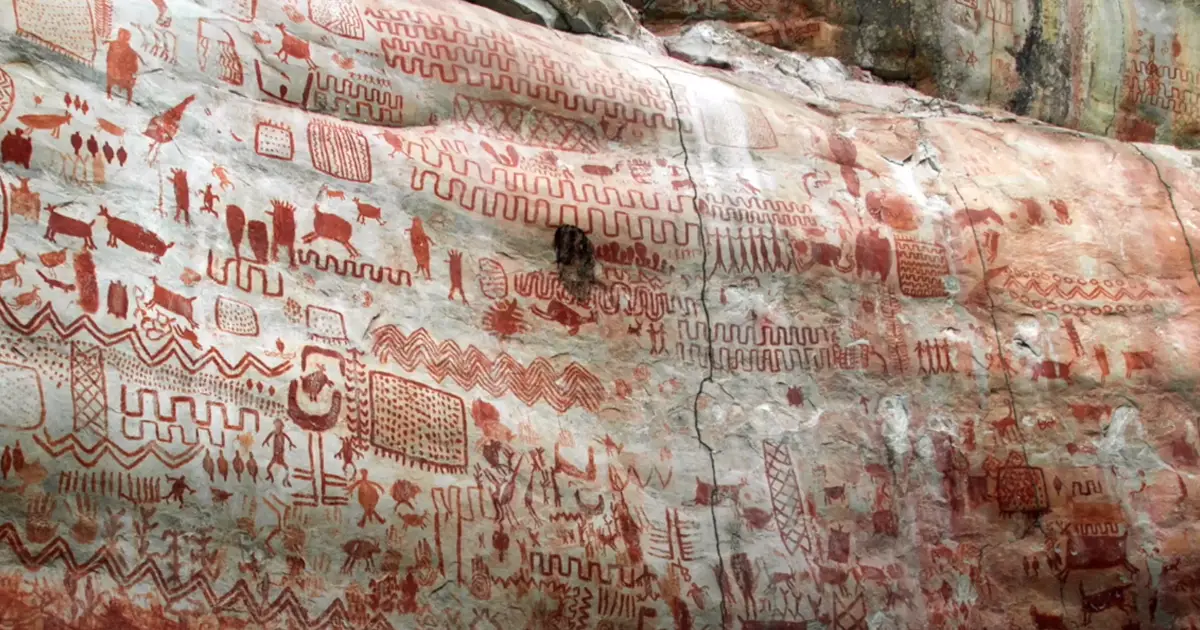
These sketches are reddish terracotta in color. According to the expert, we also uncovered bits of ochre that had been scraped to form them.
“It’s intriguing to see that all of these enormous beasts are surrounded by little guys with their arms up as if adoring these items,” he added, wondering whether the paintings are religious or have other meanings.
He highlighted that nonhumans, like animals and plants, have a spirit for Amazonian civilizations and interact and react to people in cooperative or violent ways through shamanic rites and customs shown in rock art.
One of the most intriguing aspects was the ice age megafauna, which is a temporal measure. People are oblivious to the fact that Amazon has changed its appearance. It hasn’t always been this.
A horse or a mastodont in these pictures, for example, would not live in a jungle. There are simply too many of them.
They disclose not just when they were painted by some of the first humans, which is astounding in and of itself, but also how this same place would have been: more analogous to the savannah, concluded AlShamahi.
The crew affirms that what they found is only the tip of the iceberg, and they plan to return to the site to seek more in the near future.

